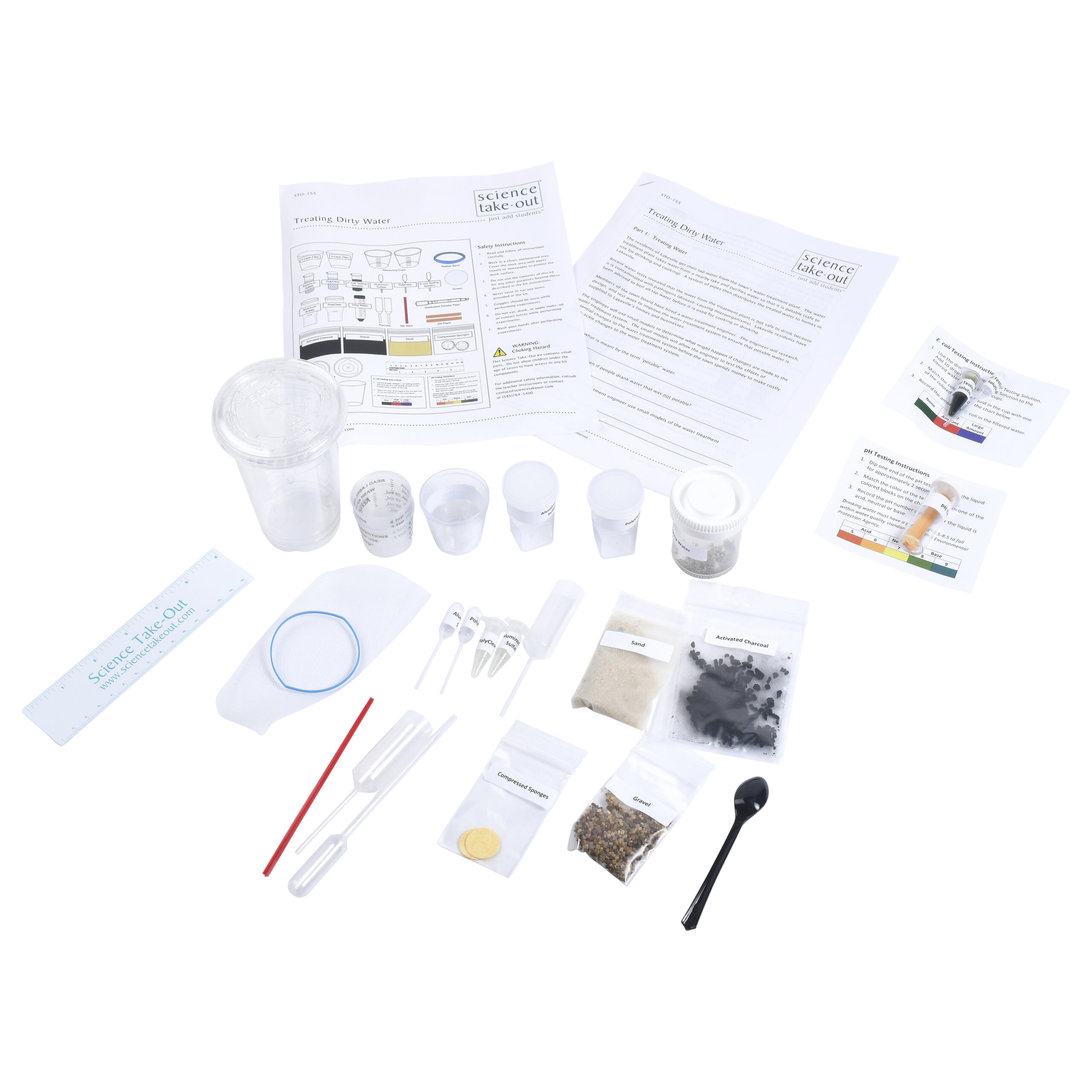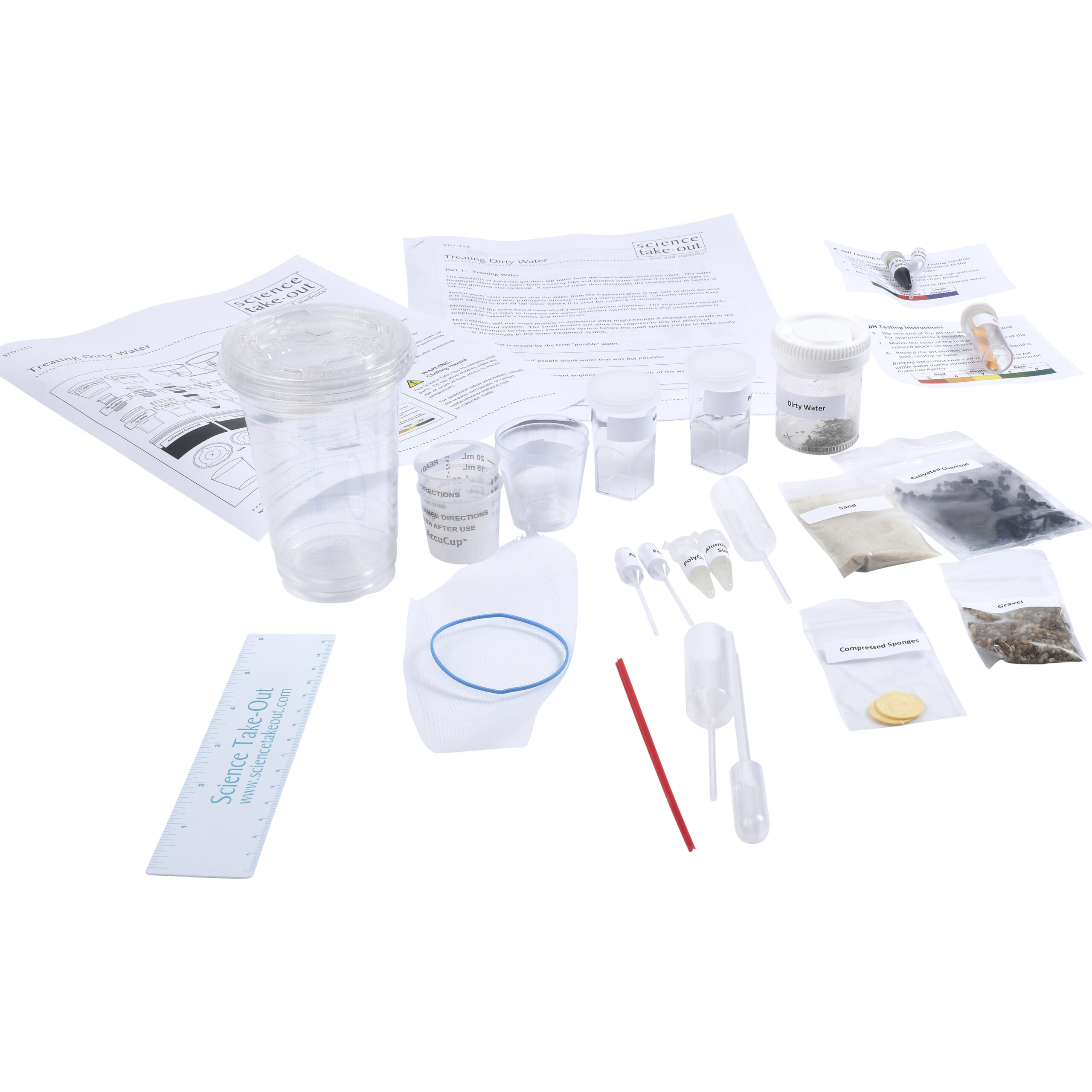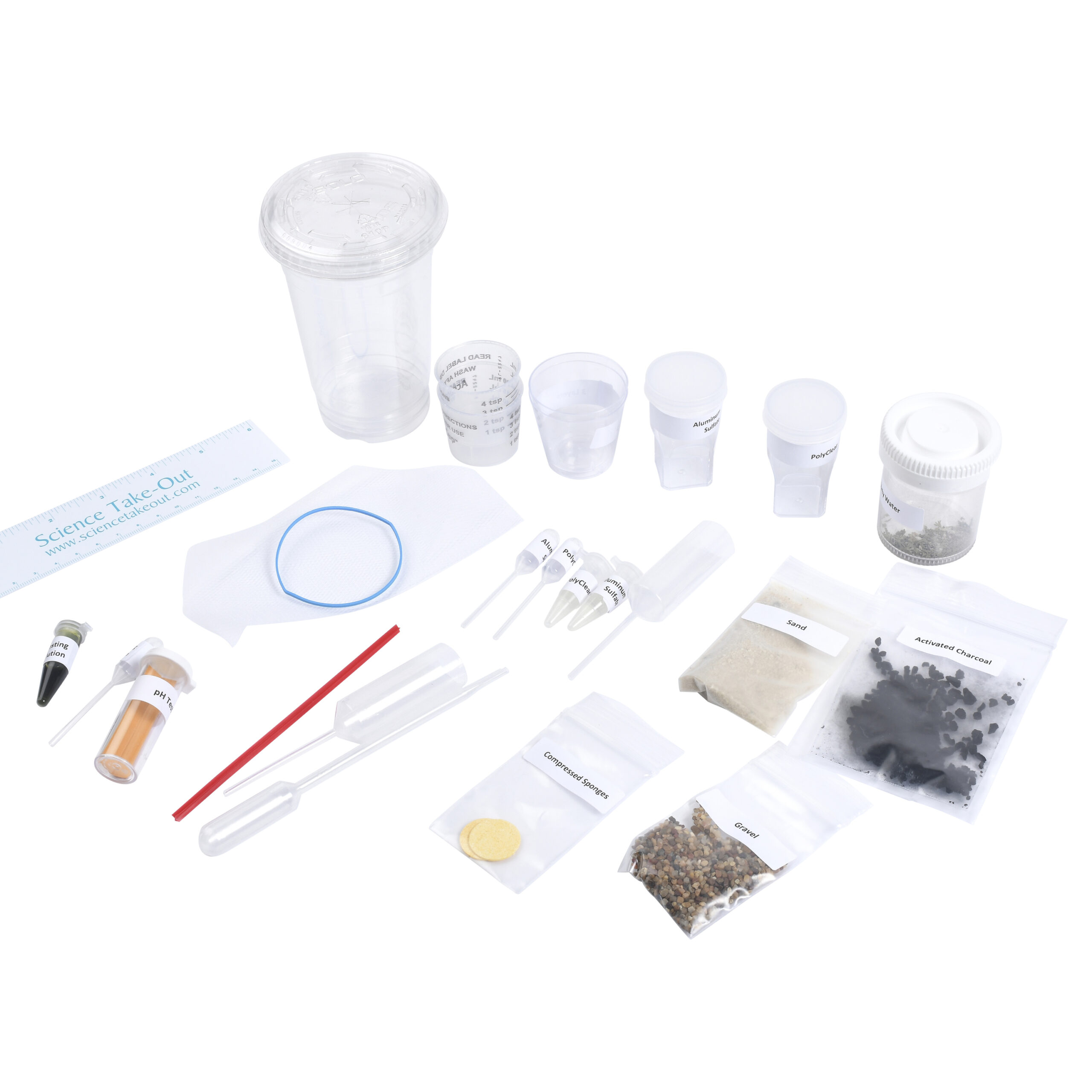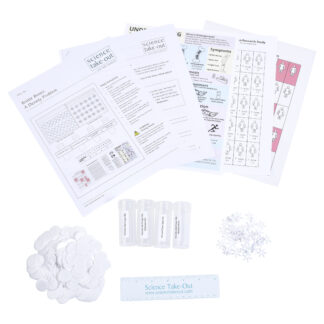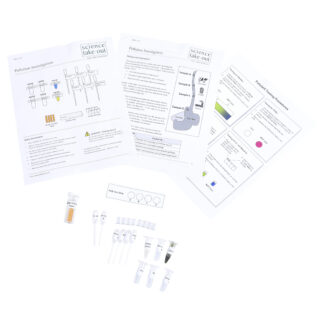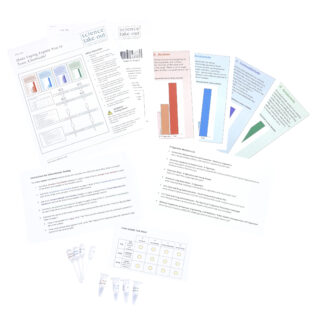Treating Dirty Water
$22.95 – $173.95
Build and test models to illustrate water treatment processes.
Kit Includes
- Tube of dried materials to create simulated “dirty” water from the lake
- Fabric screen
- Rubber band (latex free)
- 2 small labeled cups with lids
- Microtube of “aluminum sulfate” and labeled dropper
- Microtube of “PolyClear” and labeled dropper
- 2 small graduated measuring cups
- Sand
- Gravel
- Activated charcoal
- Small spoon
- 2 compressed sponge circles
- Graduated transfer pipet
- Stir stick
- 2 funnels
- 2 large plastic cups with lids
- 2 small labeled cups
- pH Testing Instructions
- 2 pH test strips
- E. coli Testing Instructions
- Microtube of “E. coli Testing Solution” and labeled dropper
Also Required
- Tray or newspaper for student work (to make clean-up easier)
- Calculator
- Safety goggles
- Tap water
- Paper towels for clean-up
Quantity Discounts
Kits:
- 1 – 9 kits: $22.95 each
- 10 – 24 kits: $21.80 each
- 25+ kits: $20.66 each
Unassembled:
- 1 – 9 packs: $173.95 each
- 10+ packs: $165.25 each
Refills:
- 1 – 9 packs: $60.95 each
- 10+ packs: $57.90 each
Correlation to Next Generation Science Standards (NGSS) Shop by NGSS »
Performance Expectations:
MS-ETS1-4. Develop a model to generate data for iterative testing and modification of a proposed object, tool, or process such that an optimal design can be achieved.
Science & Engineering Practices
Developing and Using Models - Develop a model to generate data to test ideas about designed systems, including those representing inputs and outputs.
Disciplinary Core Ideas
ETS1.B: Developing Possible Solutions - A solution needs to be tested, and then modified on the basis of the test results, in order to improve it. - Models of all kinds are important for testing solutions.
ETS1.C: Optimizing the Design Solution - The iterative process of testing the most promising solutions and modifying what is proposed on the basis of the test results leads to greater refinement and ultimately to an optimal solution.
Crosscutting Concepts
N/A
